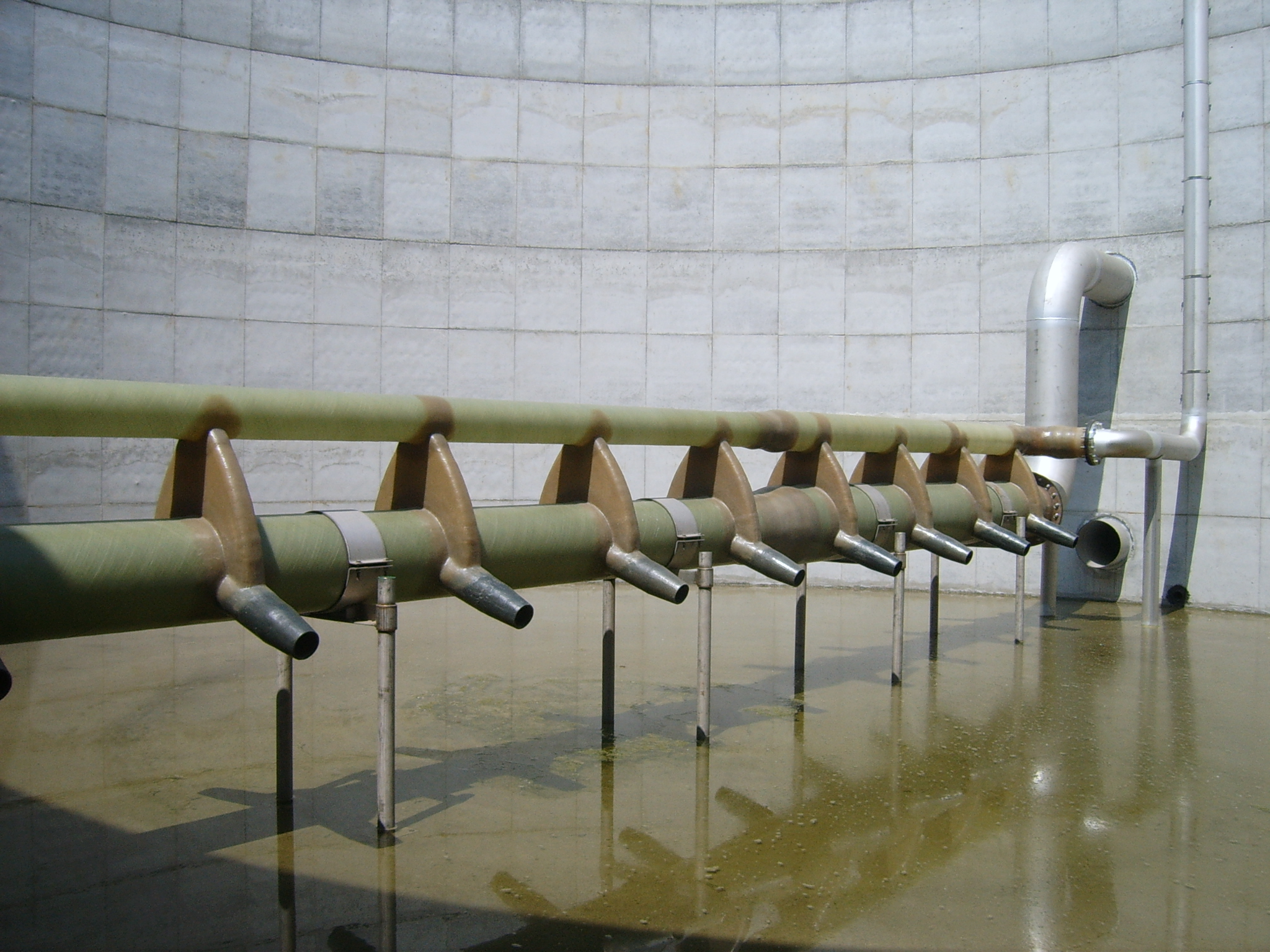Jet aeration
In aerobic wastewater treatment plants, aeration is a frequently used technique to introduce oxygen into the wastewater. There are different types of aeration: jet aeration, surface aeration, … . Jet aeration is particularly suitable for basins that are more than 5 metres deep. This unique, innovative and highly efficient system is used worldwide in various industrial sectors (food, paper, chemicals, waste processing, etc.).
How does jet aeration work?
In jet aeration, air is mixed with a liquid and injected into the wastewater. This forms a powerful water plume with high turbulence.
There are two major differences from traditional systems: the height of the system and the position of the aeration nozzles.
The current jet aeration system is designed to be elevated, typically 75 cm to 120 cm above the floor of the basin. This elevation is cost effective, as less power is required for the blowers.
The jet aeration nozzles are not arranged horizontally as in traditional systems, but at a downward angle depending on the shape of the basin. This results in a higher efficiency.
TASK proves time and again that we take all constructions and placements very seriously by meeting the required standards and obtaining the necessary certificates. We are therefore the right partner for carrying out your installation.
Traditional jet aeration systems
A traditional jet aeration system consists of aerators, piping in the aeration basin, backwash system, dry-mounted centrifugal pump and roots blowers. Connecting piping and the supporting mounting system for the jet aeration system are constructed of stainless steel.
The aerator itself consists of two nozzles. The injection fluid – the recirculated fluid/air mixture – is sprayed from an inner nozzle into an outer mixing nozzle, adding compressed atmospheric air. This creates very fine bubbles. These create a large interface between air and wastewater, resulting in a very high oxygen transfer coefficient.
What are the benefits of a jet aeration system?
- High efficiency in terms of oxygen transfer and mixing capacity
- Low maintenance
- no moving parts in the aeration basin
- insensitive to clogging
- little foaming
- Very suitable for use in deep aeration basins
- Low installation, energy and maintenance costs
- Low operating costs
- High efficiency in terms of oxygen transfer
- Long-term and stable efficiency
- Durable: lifespan of more than 20 years
- No formation of aerosols
- No pre-cooling of aeration fluid required
- Frost insensitive system
- Limited off-gas volume
- Superior corrosion and wear resistance
Where can jet aeration be used?
Jet aeration technology is applicable to a wide range of water treatment applications and sludge treatment, such as biological water treatment, activated sludge aeration, aerobic sludge stabilisation, SBR (sequencing batch reactor), MBR (membrane bioreactor), aerobic digestion, etc. Jet aeration is used in both industrial and communal water treatment.
Retrofit of existing aeration
In the context of a production expansion and/or an optimization of energy consumption, Task can assist you for the adaptation of an existing aeration system. If required, we will be happy to review the specifications of your existing aeration system to suggest optimisation with our system.
Featured Projects
Would you like more information or a quote?
Talk to us about your problem. We will take the time to go over your project together. Our many years of experience allow us to quickly work out the right solution to your problem.











